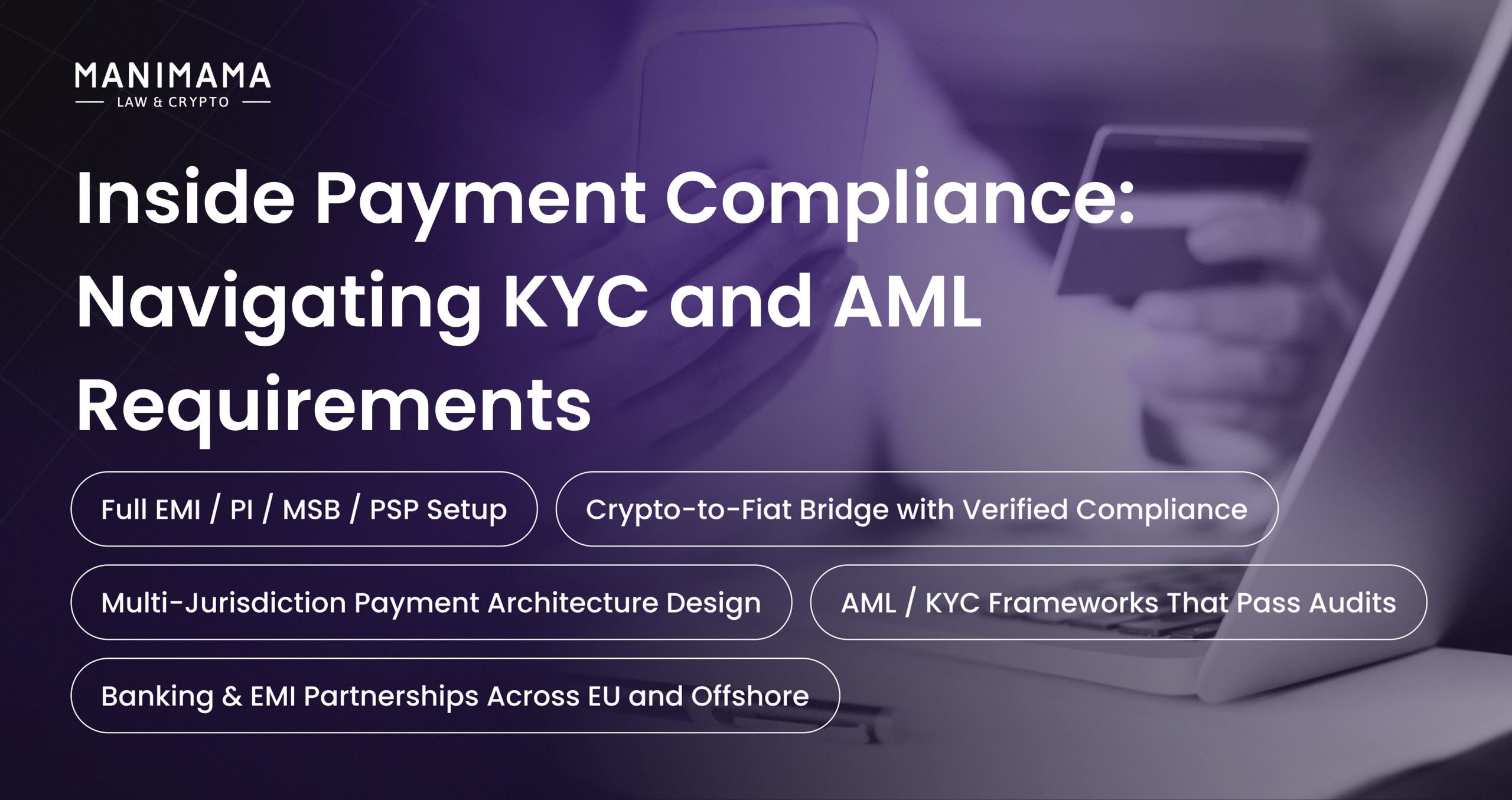The other 90%? That’s the accounting and tax complexity your finance organization must own.
It’s a familiar story for fast-growing e-commerce and SaaS companies. Your customers, especially in emerging markets like Asia and Latin America, are asking, “Can I pay in crypto?”
Your CEO, focused on market expansion, says: “Excellent—let’s capture that segment. Tech team, please integrate Coinbase Commerce or BitPay. It’s just a plugin, right?”
This is the moment CFOs and finance leaders should raise strategic financial questions.
As the financial protector for our clients at Manimama, we’ve seen this movie before. While the technical integration is trivial, the financial and tax clean-up that follows is anything but. This issue extends far beyond software.
Consider this: the plugin only covers 10% of the tech integration. The other 90% is the accounting, tax, and legal framework required to keep your EU-based company (LTD, GmbH, Sp. z o.o., etc.) compliant. Transitioning from technical ease to complex compliance is where the real work begins.
Running crypto payments without a robust financial architecture is the quickest path to costly audits and compliance exposure—a concern every CFO should anticipate.
The most common mistake is thinking you’re “selling in crypto.” You are not. You are selling a product/service in Euros (EUR), and the customer is simply using crypto as a settlement method.
How to do it right:
- Your invoice must always be denominated in your functional currency (e.g., EUR). This is the value you use for revenue recognition, and, critically, for VAT purposes.
- For VAT MOSS/OSS, nothing changes. You still must identify your customer’s location and charge the correct VAT rate (or zero-rate the sale) based on the EUR value of the service, just as you would with a credit card.
- Your invoice should reference the EUR-to-Crypto exchange rate at the moment of the transaction. This serves as your auditable proof of the revenue you’ve booked.
After payment is received, you must make your most important strategic decision. Here’s where you choose your approach.
Strategy A: the “Instant Convert” (recommended for 99% of businesses)
This is the simple, clean, and low-risk path.
- You use a payment processor that instantly converts the customer’s crypto (e.g., 0.05 ETH) into EUR.
- Accounting is straightforward: your customer pays €100, you receive €98 after fees, and record €100 Revenue.
- €2 in Bank/Processing Fees
- As a result, you have no crypto assets on your balance sheet, no volatility risk, and your accounting is spotless.
Strategy B: The “Hold” (The Complex “Treasury” Path)
This is for companies that intentionally want to hold crypto as a treasury asset.
- The customer pays 0.05 ETH (worth €100); you hold it in your company wallet.
- Accounting becomes a complex, multi-step process.
- You still book €100 in Revenue (based on the value at the time of sale).
- You do not book “Cash.” Instead, create a new asset class, usually an Intangible Asset under most local GAAPs.
- Intangible assets require impairment tests for losses but are usually not revalued for gains, creating P&L asymmetry until a sale occurs.
The P&L “Volatility” Trap
Let’s follow Strategy B. You hold the 0.05 ETH (booked at €100).
- End of Quarter 1: The price of ETH drops. Your 0.05 ETH is now worth €80. You must book a €20 impairment loss on your P&L.
- End of Quarter 2: the price of ETH moons. Your 0.05 ETH is worth €150. You can… do nothing. That €50 gain is “unrealized” and, under intangible asset rules, often cannot be recognized.
- End of Quarter 3: You sell the ETH for €150. You now recognize a complex gain on sale, which your tax advisor will need to manually calculate.
This isn’t a “forex difference”; it’s a complex asset-disposal calculation that exceeds the capabilities of standard software.
The lesson: you must prioritize architecture before integration. Building the right financial structure comes first; only then should you implement technical solutions.
The decision to accept crypto is a strategic finance decision, not just an IT task. CFOs must lead this discussion.
Your choice between “Instant Convert” (simple) and “Hold” (complex) has significant downstream consequences for your corporate tax, balance sheet, and profit and loss (P&L) statement.
At Manimama, we don’t just “do the books.” We partner with you to be the financial architects behind your technology. We help you design the compliant, auditable, and tax-efficient framework before you ever write a line of code.
Considering crypto payments? Schedule a strategy call with us today. We’ll guide you in choosing the best approach and help build a robust financial system to support your global growth.
The content of this article is intended to provide a general guide to the subject matter, not to be considered as a legal consultation.










